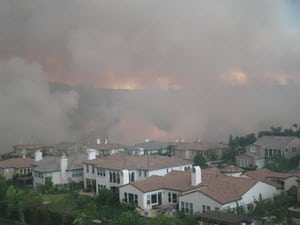Escape Plans & Evacuation
Be Prepared to Escape DANGER!
There’s no telling when a fire, natural disaster, or other life-threatening event can occur. To best maximize the safety of you and your family, it’s always best to have a smart, safe escape plan in place. Here are some helpful tips to craft a successful escape plan.
- Everyone should have a plan for escape in the event of a fire
- If you hear a fire alarm or smoke detector alarm, leave immediately
- Draw and store a floor plan for each level of your home
- Show two clear ways out of each room
- Make sure everyone can unlock and open windows in the home
- Make sure any security bars have a quick-release device
- In a multi-story building, use the stairs instead of the elevator
- Make sure no exits are ever blocked
- Close doors behind you to create a barrier from the fire
- Crawl low under smoke, keeping your head near the floor and cleanest air
- Test doors and doorknobs with the back of your hand—if it’s warm, head to your secondary exit
- Designate an outside meeting place in front of your home
- Once you are out, stay out—do not re-enter your home for any reason
- Practice your fire drill at least once a year—using a different exit each time
- Provide alternatives or special aids for anyone with disabilities

The Language of Evacuation
To succeed anywhere, it’s best to speak the language as fluently as possible. In 2020, the State of California took action to craft a more consistent message regarding evacuations. With an eye toward eliminating confusion, officials opted to utilize the same terminology throughout the entire state. The following are some helpful terms and their definitions.
- Evacuation Order: This is a lawful order to leave now, as there is an immediate threat to life. The area is lawfully closed to public access.
- Evacuation Warning: Those who require additional time to evacuate, and anyone with livestock and/or pets, should leave now, as there is a potential threat to life and/or property.
- Shelter in Place: Go indoors and remain there, shutting and locking all doors and windows. Prepare to self-sustain until further notice and/or contact from emergency personnel for additional direction.
For additional details on this updated terminology, visit the Evacuation Terminology page on the VC Emergency website.


